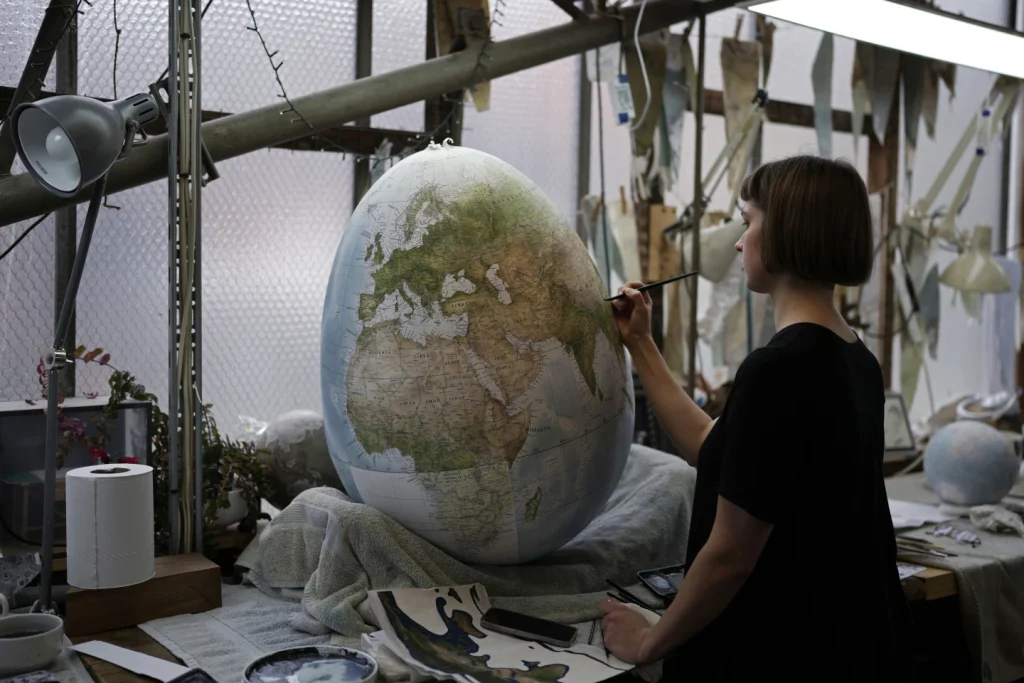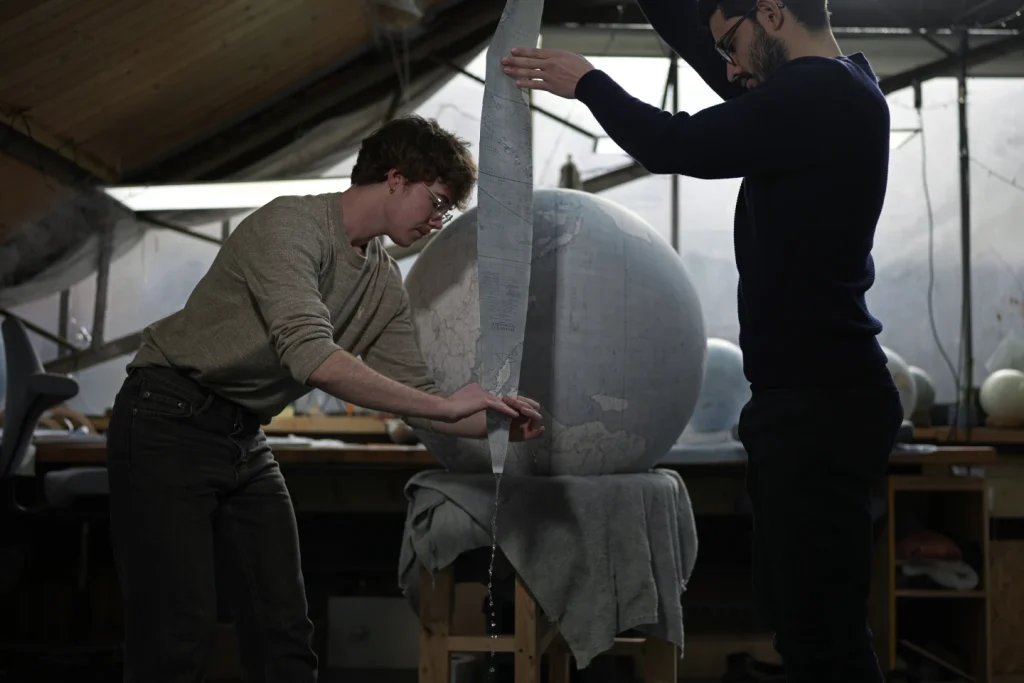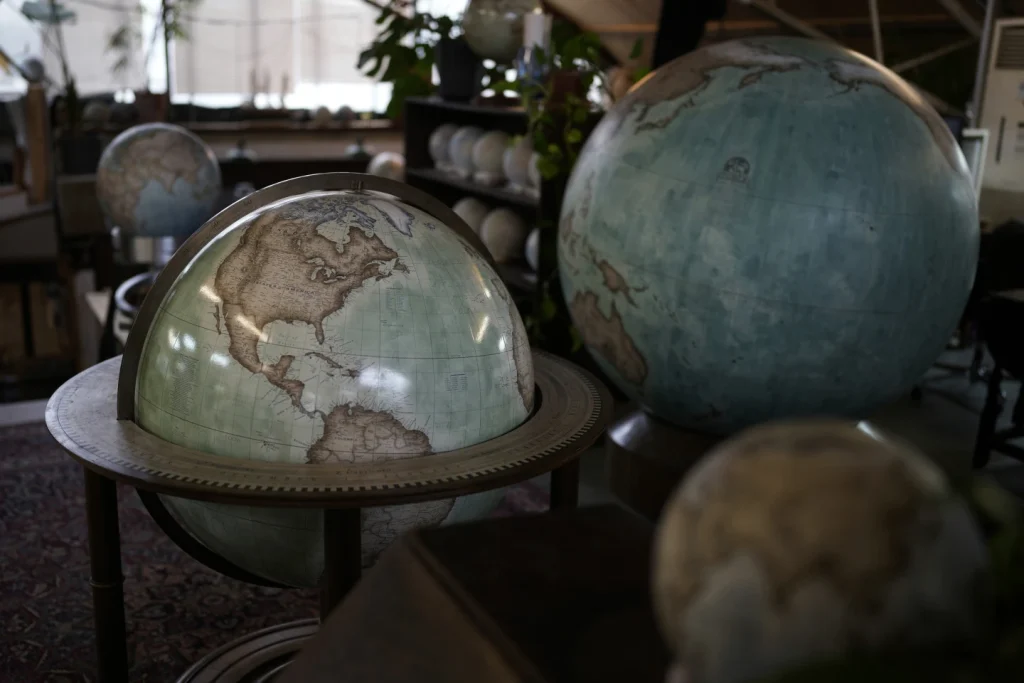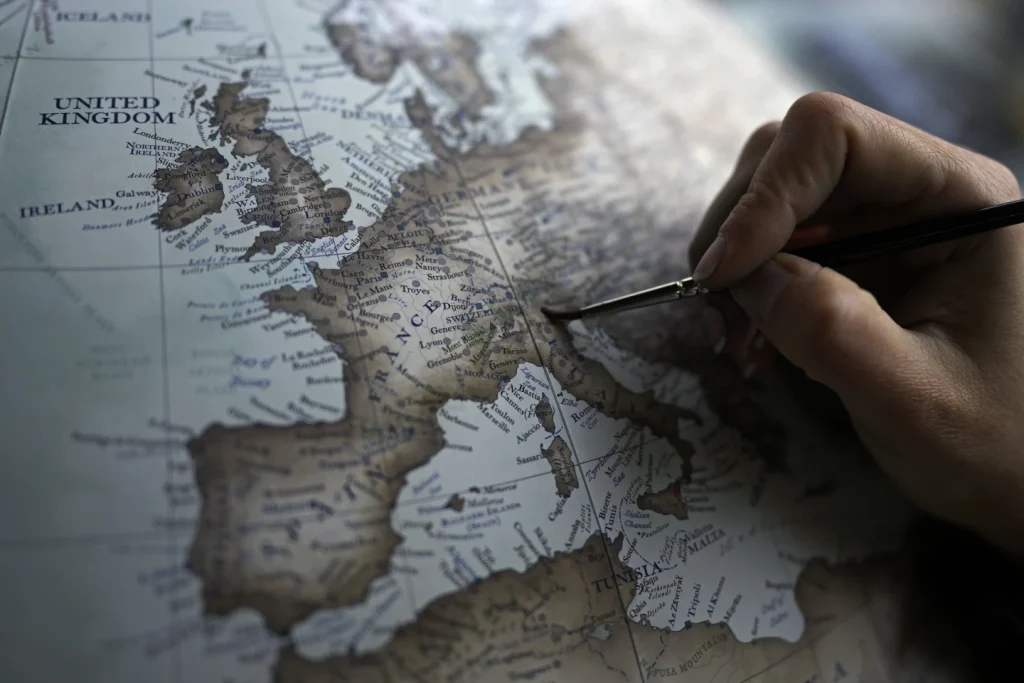The enduring allure of globes in a world increasingly dominated by digital technology is a fascinating testament to the human desire to connect with our planet on a deeper level.
In a time where Google Earth, GPS-equipped devices, and advanced mapping technologies reign supreme, the humble globe continues to hold a special place in our hearts and minds.
London globemaker Peter Bellerby’s dedication to crafting globes, not just as tools for navigation but as works of art that evoke a sense of wonder and connection to the world, exemplifies this enduring appeal.
When one spins a globe and randomly places a finger on its surface, one is often met with the vast expanse of water that covers 71% of the Earth.
This simple act can lead to discovering unknown places, understanding the impact of wars or climate change on certain regions, and sparking curiosity about the lives of people in far-off lands.
The cartouche, the globemaker’s signature, and the concept of antipodes add layers of complexity and intrigue to this spherical representation of our planet.
In a world where rapid technological advancements have revolutionized the way we perceive and interact with geography, the traditional globe stands as a symbol of our innate desire to find our place in the cosmos.
Bellerby’s belief in this human yearning to connect with the world around us led him to create a globe for his father’s 80th birthday, a gesture that ultimately led to the establishment of his successful globemaking company.

The tangible nature of a globe, its ability to physically connect us to the planet we inhabit, sets it apart from digital tools like Google Earth, which may offer convenience but lack the tactile and emotional impact of a physical globe.
The act of building a globe, however, is not without its challenges and complexities. Bellerby’s company has faced logistical hurdles in regions with disputed borders, highlighting the geopolitical implications of globemaking.
Moreover, the question of the relevance of globes in today’s rapidly changing world looms large. As snapshots of the past, globes inherently present an outdated view of the world, perpetuating inaccuracies in a planet that is in a constant state of flux.
Yet, the three-dimensional nature of globes, coupled with the irresistible urge to spin them and the allure of their map images, continues to captivate individuals.
Jan Mokre, vice president of the International Coronelli Society for the Study of Globes, suggests that perhaps a sense of nostalgia and the tangible appeal of globes as physical objects contribute to their enduring charm.
In a world where digital representations of the Earth abound, the tactile experience of interacting with a globe offers a unique perspective on our planet.
Just as vintage cars and mechanical watches hold a certain allure for enthusiasts, globes hold a timeless appeal that transcends mere functionality.
In conclusion, the enduring fascination with globes in an era defined by technological innovation underscores the deep-rooted human connection to the Earth and the cosmos.
Despite the challenges and questions surrounding their relevance, globes continue to serve as symbols of exploration, discovery, and the timeless beauty of our planet.
As we spin a globe and contemplate the intricate web of continents and oceans that make up our world, we are reminded of our place in the vast tapestry of the universe, a reminder that transcends time and technology.
In the contemporary landscape of education and interior decoration, the traditional globe seems to be losing its prominence, as digital technologies increasingly dominate classrooms and homes.
This sentiment is echoed by Nall, who observes a decline in globe usage, particularly in educational settings. The shift towards digital tools is undeniable, raising questions about the future relevance of physical globes in the learning process.

Peter Bellerby, a renowned globe maker, produces exquisite handcrafted globes that are not merely educational tools but also objects of beauty and prestige.
The meticulous process of creating these globes involves skilled artisans painting intricate details on delicate panels that adorn the spherical surface. From celestial constellations to vibrant landscapes, each globe is a work of art that captures the imagination of its viewers.
Despite the high cost associated with Bellerby’s globes, they attract a diverse clientele ranging from families to businesses and even heads of state.
Private art collectors and filmmakers also appreciate the craftsmanship and historical significance of these globes. The globes have made appearances in movies like “Hugo” and “Tetris,” adding a touch of elegance and history to cinematic productions.
However, the production of globes is not without its challenges, as geopolitical sensitivities come into play. The depiction of borders on a globe is a delicate matter, as countries have differing perspectives on territorial disputes.
Bellerby’s company takes a cautious approach by marking disputed borders as such, acknowledging the complexities of global politics and history.
The history of globemaking is intertwined with the broader narrative of human exploration and conquest. The earliest surviving terrestrial globe, the “Erdapfel,” dates back to 1492 and offers a glimpse into the worldview of that era.
Created by Martin Behaim, this globe not only showcased geographical knowledge but also reflected the economic interests and power dynamics of the time, including the Atlantic slave trade.
During World War II, globes played a significant role in diplomatic exchanges, with notable figures like Winston Churchill and Franklin D. Roosevelt using them as tools for strategic discussions.
These twin globes symbolized the interconnectedness of nations during a tumultuous period in history, highlighting the importance of geography in shaping political decisions and alliances.
In conclusion, the art of globemaking transcends its utilitarian purpose to become a symbol of craftsmanship, history, and geopolitical awareness.
While digital technologies may be reshaping educational practices, the enduring appeal of handcrafted globes lies in their ability to evoke curiosity, beauty, and a sense of interconnectedness in an increasingly complex world.

As we navigate the challenges of the present and future, the humble globe serves as a reminder of our shared history and the diverse perspectives that shape our understanding of the world.
The creation of the globes gifted to President Franklin D. Roosevelt and Prime Minister Winston Churchill was a meticulous and collaborative effort that involved the expertise of over 50 government geographers, cartographers, and draftsmen.
These individuals worked tirelessly to compile the vast amount of information needed to accurately represent the world on the globes, which were ultimately constructed by the Weber Costello Company of Chicago Heights, Illinois.
Today, the Roosevelt globe is proudly displayed at the Roosevelt Library in Hyde Park, N.Y., while Churchill’s globe can be found at Chartwell House, the Churchill family home in Kent, England, as documented by the U.S. Library of Congress.
Although the globes were intended to aid the leaders in formulating war strategy, they ultimately served as a symbolic gesture and a strategic tool in the realm of modern warfare, as noted by Bellerby. This exemplifies the significance of these globes beyond their mere geographical representation.
